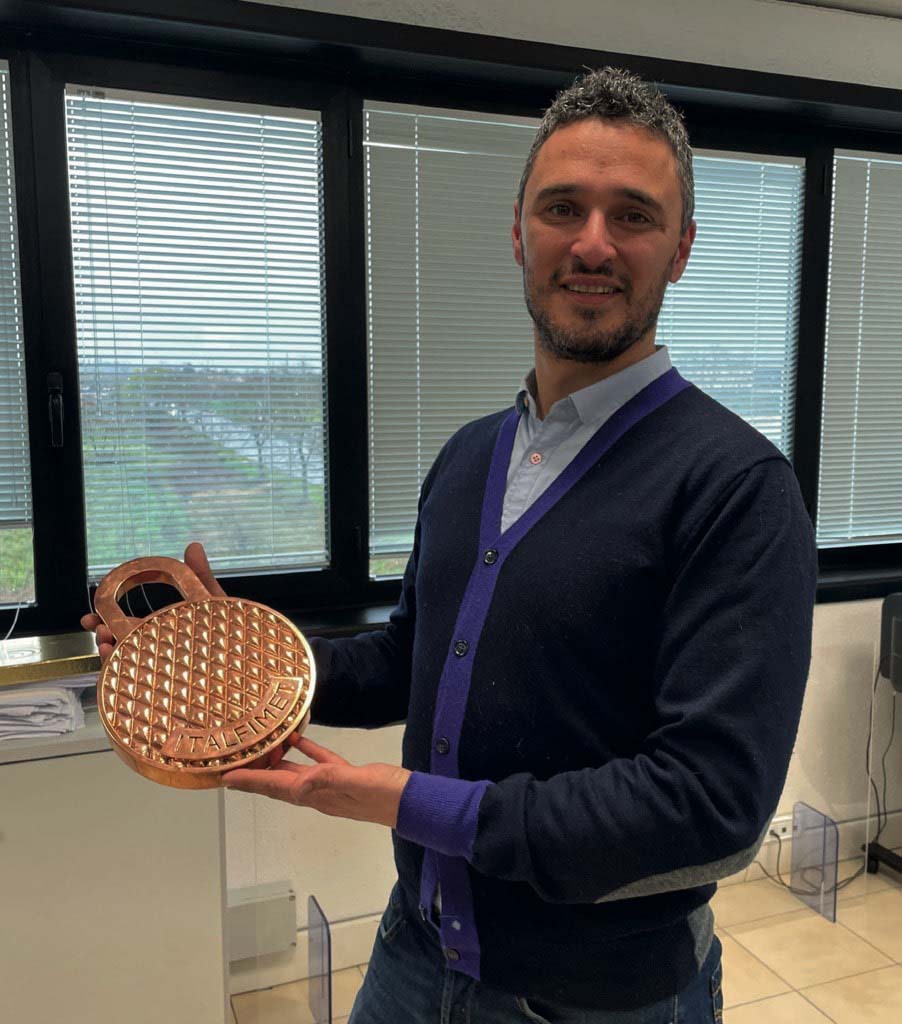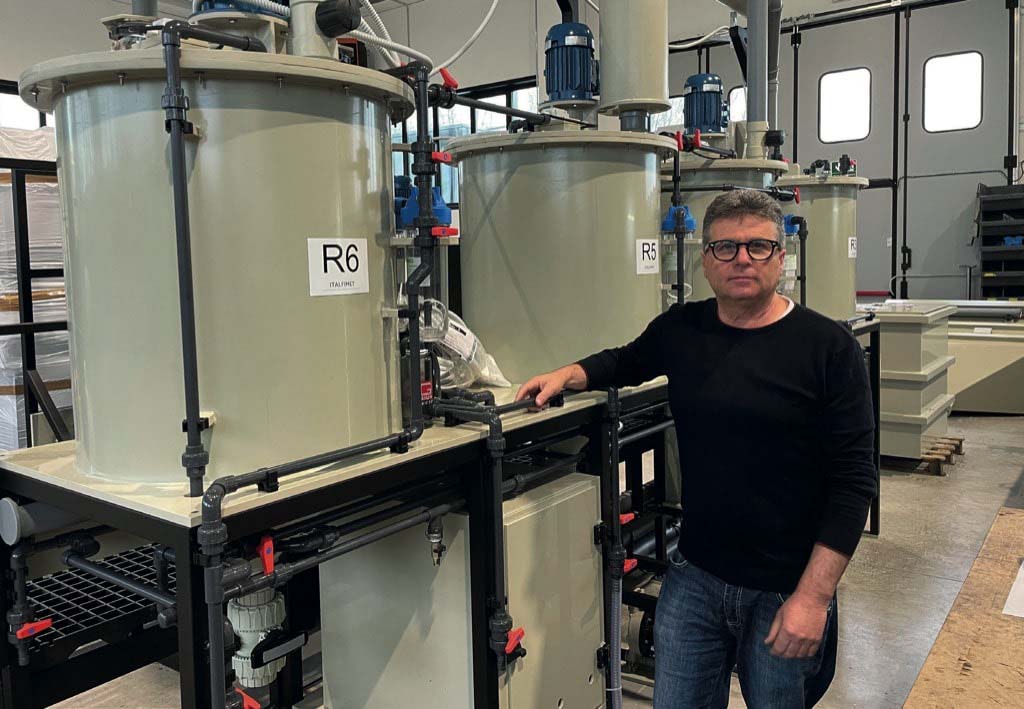Italfimet, the Italian reference point in the galvanic sector in the world, pursues with passion the path towards a greener future
Italfimet Srl – Electroplating Chemicals & Plants, based in Monte San Savino in the province of Arezzo, has been dealing with galvanic finishes for the production of high-quality accessories for thirty years. Excellent results have been achieved worldwide thanks to top quality production of fashion accessories, jewelry, bijoux and electroforming. The finishing process was born in symbiosis with the technical engineering department and the chemical laboratory division. These two branches of the company supported on the one hand design, consultancy, the development of specifications, the production and distribution of chemical products and the creation of a wide range of colors for precious metals, a variety of high professional services obtained through the technology of galvanic baths. On the other hand, Italfimet designs and manufactures galvanizing systems focusing on eco-sustainability, a suitable recovery and the optimal refining of precious metals. This all makes top quality products of the best companies in the field of high fashion and jewelry unique. We interviewed the company’s partners, Patrizio, Andrea and Luca Capaccioli, Amulio and Diego Liberatori, Alessandro Matteini.
When was Italfimet born and what was its committment?
Patrizio Capaccioli: “Italfimet was founded in 1992 – this year we celebrate our thirstiest anniversary – and mainly deals with chemistry and plant engineering related above all to the galvanic field. Specifically, we have a chemical division for the development of processes and products for metal decoration; beside this, we have a plant specializing in the design and construction of galvanic systems. Italfimet offers an extensive catalog of services suitable for many situations. In addition, we carry out the design and the installation and primary start-up of a plant, along with after-sales assistance. Initially, all our production and our services were born to satisfy the needs of the goldsmith sector. In fact, in the 1990s this sector was still expanding and had not suffered the stagnation we are experiencing now. This allowed us to study the decoration of precious metals in depth and then we went ahead with this precise mission. Subsequently, however, the fashion sector has developed a lot in the territory of Florence and therefore we have also expanded our business in decoration of gold and silver jewelry, and other materials.”
What is the new technology in this field?
Diego Liberatori: “The combination of plants and chemistry allowed us to produce and develop technologies that would not be feasible with chemistry alone and a separate plant engineering. For example, recently, we have registered a patent on the use of specific rectifiers aimed at supplying all deposition systems with direct electrification. We were able study the right orientation to obtain the lowest waste of precious metals. However, in the chemical sector, research & development needs to be continuously implemented. We have been developing the internal research laboratory and, moreover, ten years ago, we have started collaborations with top Tuscan universities.
Moreover, we have filed patents on ecological coatings of precious metal alloys, eliminating cyanide from galvanic baths but also extremely toxic metals that in the past were used on certain depositions.”
Italfimet carries on an intense production as well as R&D activities.
Patrizio Capaccioli: “There are currently two people who permanently deal with this who joined our company as follows. Two years ago, the owners were Patrizio Capaccioli, Amulio Liberatori and Alessandro Matteini; then, we decided to let the new generation – Luca and Andrea Capaccioli and Diego Liberatori – enter into business as well. This decision represented a big step forward for the company with Luca taking care of research and development, Andrea managing the laboratory and chemical production and Diego dealing with design and the development of the plant.
In the meantime, we have acquired a company in Vicenza, the Gold City, which supplied us with current rectifiers and which we committed for the development of some custom rectifiers. Last year, in November, we finalized the acquisition.”
Did you take part in the APLF fair held in Dubai?
Diego Liberatori: “Yes, we were there and we had very important targeted meetings in the field of electroforming. We are a point of reference worldwide also because we were the first company to industrialize, after 2012, the deposition process from gold-copper-cadmium to gold-copper. As regards as the electroforming, we were the first ones to actually possess this type of technology; I have to say that a great support comes from the technology and the specific chemical techniques we work with. Overall, this combination makes us complete and very competitive (in fact, any company willing to work with electroforming calls Italfimet). We are currently working hard on how to eliminate nickel on precious alloys and we were able to obtain a specific color by combining gold and other nickel-free metals. This means more difficulties, but there seems to be a large demand for research in the fashion sector both for nickel free and also for cyanide free.”
You are developing a whole series of unique technologies that your competitors admire.
Patrizio Capaccioli: “That’s true, we developed them first and we are still developing them now. In house research and development are constantly in progress, in fact we have already installed galvanic baths. To make another example, there are companies that produce and galvanize items with a unique and almost inimitable color for a famous foreign fashion brand but that contain hints of nickel. Italfimet, instead, manages to produce the same color but 100% nickel free.”
Where is this technique mostly used?
Diego Liberatori: “It is mostly used in Tuscany. There are three or four companies that have already adopted this process installing specific machinery. However, I think that even the experts themselves face problems to entirety remove nickel out of the galvanization process. These researches take place in the goldsmith sector, but the main driving force is above all the fashion sector. We as Italfimet are reaching important goals that, just a few years ago, seemed impossible to achieve.”
Italfimet has a branch also in Vicenza, with a laboratory and a warehouse in the gold district, is it correct?
Diego Liberatori: “Yes, it is a branch in the Vicenza that serves many companies of the fashion and of the jewelry sectors. We made this choice to follow the production sites of the area our usual attention. The headquarters has all the necessary strengths: a chemical laboratory equipped to carry out tests on galvanic processes, a warehouse of products for galvanic items to be able to promptly supply customers, a meeting area where we can deepen relations with our customers and collaborators and a capillary technical assistance service.”
Do you foresee any growth for the companies involved with galvanic processing?
Patrizio Capaccioli: “We believe so, even if today, for a galvanic plant, it takes about a one million euros and beyond investments to start such business.
In the last two years, in the Florence area, we have designed four galvanic plants, within the accessories sector. However, this type of market demand can arise to optimize sampling timing, safety, controls and process. Some fashion houses appreciate a supplier which has an in-house galvanic department, so to deal with a single reliable interlocutor.”

Diego Liberatori

Patrizio Capaccioli
